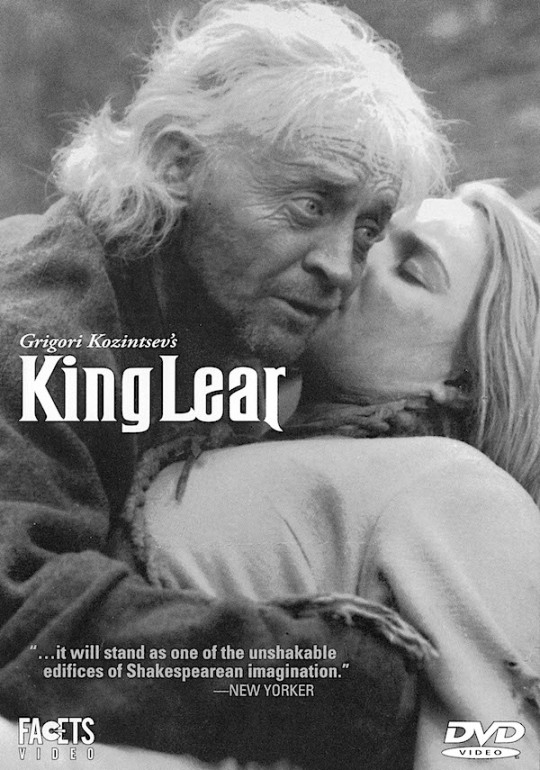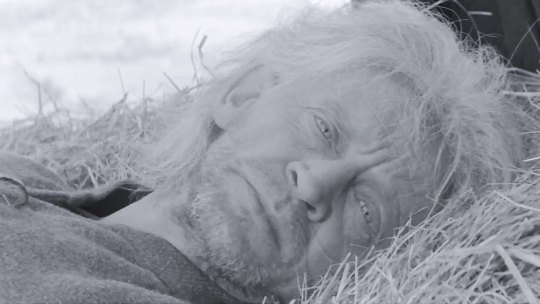#Grigori Kozintsev
Explore tagged Tumblr posts
Text



Presenting you, Innokenty Smoktunovsky as Yuri Detochkin from "Beware of the Car" (1966) vs. Lord Hamlet from "Hamlet" (1964)!
Two of my favorite roles of his, had the urge to draw him so bad because he's way too spectacular. It's like the sun and moon at the same time 😂
#artwork#digital art#digital illustration#digital painting#hamlet#hamlet 1964#grigori kozintsev#william shakespeare#Гамлет 1964#beware of the car#Берегись автомобиля#eldar ryazanov#innokenty smoktunovsky#yuri detochkin#soviet film#soviet cinema#hamlet fanart
58 notes
·
View notes
Text





ГАМЛЕТ — 1964.
#mine#film#hamlet#гамлет#william shakespeare#hamlet 1964#soviet hamlet#soviet film#soviet cinema#innokenty smoktunovsky#grigori kozintsev#best ghost hamlet sr tbh i really liked the aesthetic they went for#it’s okay so far im in about act three#i have opinions on the portrayals but the cinematography is on point tho
24 notes
·
View notes
Text



Bruno Freindlich (1909-2002) as Hamlet (1954, a stage production by Grigori Kozintsev)
#bruno freindlich#hamlet#shakespeare#grigori kozintsev#it was a year before he played feste on screen i think#it was unusual to find out he played hamlet as well#soviet theatre#russian theatre
4 notes
·
View notes
Text

#watched kozintsev in class this was all i could think about#couting this as english revision#hamlet#grigori kozintsev#his OUTFIT oh my god i cant find a full pic of it but it was like smth youd see on a high fashion runway
6 notes
·
View notes
Text

Currently Watching
KING LEAR Grigori Kozintsev Soviet Union, 1970
2 notes
·
View notes
Text

Seen (again) in 2024:
King Lear (Grigori Kozintsev), 1971
#films#movies#stills#King Lear#Grigori Kozintsev#theater#adaptations#William Shakespeare#Soviet#1970s#seen in 2024#Juri Jarvet
0 notes
Text
Hamlet on Letterboxd https://boxd.it/2rhQ
0 notes
Text
I didn't suggest it at first because if your goal is to prepare for Merry and Pippin Are Dead (I am so happy for you and also so jealous), you'll probably want something faithful and in English BUT
if you ever want a really good and really poetic take on Hamlet, watch the Russian one, by Kozintsev (1964). It's based on a Pasternak translation and it's shorter, but it's amazing.









Okay so I'm seeing a production of Rosencrantz and Guildenstern Are Dead later this week and know literally nothing about it beyond the one-sentence summary and the fact that it's long enough to require two intermissions.
Opening to the floor suggestions on which production of Hamlet I should watch beforehand.
#Rosencrantz and Guildenstern Are Dead#Hamlet#aka Gamlet#shakespeare#tom stoppard#grigori kozintsev#theatre#trs#film
27 notes
·
View notes
Text

Grigory Kozintsev’s “Hamlet, 1964
16 notes
·
View notes
Text







Venice in the art of Alexandra Exter (1882-1949)
Carnival in Venice (oil on canvas) 1930s
Carnival Procession (oil on canvas)
Masked Figures by the Banks of a Venetian Canal (oil on canvas)
Venetian Masks (oil on panel)
Pulcinella (gouache on paper) late 1920s-30s
Venice (oil and sand on canvas) 1925
Venice, 1915
"Aleksandra Aleksandrovna Ekster, also known as Alexandra Exter, was a Russian and French painter and designer. As a young woman, her studio in Kiev attracted all the city's creative luminaries, and she became a figure of the Paris salons, mixing with Picasso, Braque and others. She is identified with the Russian/Ukrainian avant-garde, as a Cubo-futurist, Constructivist, and influencer of the Art Deco movement. She was the teacher of several School of Paris artists such as Abraham Mintchine, Isaac Frenkel Frenel and the film directors Grigori Kozintsev, Sergei Yutkevich among others." [x]
"Exter painted views of Florence, Genoa and Rome, but ‘most insistent and frequent were images of Venice. The city emerged in various forms: via the outlines of its buildings, in the ‘witchcraft of water’. In glimmering echoes of Renaissance painting, in costumes and masks and its carnivals’.
"Exter’s characteristic use of the bridge as a stage platform, seen most clearly in Carnival in Venice, is a legacy of her time as Tairov’s chief designer [Alexander Tairrov, director of Moscow's Kamerny Theatre]; the director believed in breaking up the flatness of the stage floor which the artist achieved for him by introducing arches, steps and mirrors. Even in her easel work, the emphasis is at all times on theatricality. Bridges are used as proscenium arches, the architecture creates a stage-like space in which to arrange her cast."
"For all her modernity, references to Venetian art of the past abound in these paintings. The masked figures are influenced by the Venetian artist Pietro Longhi, to whom Exter dedicated a series of works around this time. The incredible blues used in both Carnival Procession and Masked Figures by the Banks of a Venetian Canal are a direct reference to Titian, who was famed for his use of ultramarine, the pigment most associated with Venice’s history as the principal trading port with the East." [x]
"Exter had long since abandoned the Cubist syntax by 1925 but her sense of colour remained together with a strong conviction, shared with Léger, that a work of art should elicit a feeling of mathematical order. In its graceful interaction of fragmented planes and oscillation between emerging and receding elements, Venice (1925) echoes the more precise qualities that also appear in Léger's work at this time, both artists occupied with the continuous modulation of surfaces and the 'melody of construction' that Le Corbusier was still advocating in the 1930s. But while Exter subscribed to Léger's theory that 'a painting in its beauty must be equal to a beautiful industrial production', she never fully embraced the aesthetics of the machine and rejecting the common opposition between ancient and modern, her work often retains a classical edge - for example in these trefoil windows, arches and vaults. Human figures, which had been nearly absent from her Cubo-futurist paintings, also return in other works from this period."
"She was undoubtedly aware of the concept of 'defamiliarisation', a term first coined by the influential literary critic Viktor Shklovsky in 1917:
'The purpose of art is to impart the sensation of things as they are perceived and not as they are known. The technique of art is to make objects 'unfamiliar,' to make forms difficult to increase the difficulty and length of perception because the process of perception is an aesthetic end in itself and must be prolonged.'
An instance of this device is discernable in the present tight formation of the oars, seen from above. Like Braque and Picasso, Exter incorporates sand into certain areas of pigment to enhance the differentiation of surfaces, a technique also used to 'increase the length of perception'. The occasional lack of overlap between the boundaries of the textured surfaces and colour planes strengthens the paradoxical combination of tangible presence and elusive abstraction that makes Venice such a powerful work."
"Venetian subjects occur in Exter's work as early as 1915. A gigantic panneau of the city was one of the final works she produced in the Soviet Union and exhibited in the 1924 Venice Biennale." [x]
"The specific theme of the Commedia dell’Arte first appeared in Exter’s work in 1926 when the Danish film director Urban Gad approached her to design the sets and marionettes for a film which was to tell the story of Pulcinella and Colombina, transposing them from the Venice of Carlo Goldoni to contemporary New York. Pulcinella most likely relates to the artist’s subsequent experimentations on the theme of the Commedia dell’Arte. Pulcinella, who came to be known as Punch in England, is one of the classical characters of the Neapolitan puppetry. Typically depicted wearing a pointed hat and a mask, Pulcinella is an opportunist who always sides with the winner in any situation and fears no consequences." [x]
44 notes
·
View notes
Text

Scene from “Hamlet” by the Soviet film director Grigory Kozintsev. 1964
4 notes
·
View notes
Text

Finally drew Smoktunovsky's Hamlet. I'll say and I'll keep saying it again, he was FANTASTIC. The acting. His way of talking. I'm in love, your honor.
Original reference from the film!

Don't tell me I was the one who kept simping for this madman I FELT MYSELF LIKE *passes out on the floor*
#hamlet#hamlet 1964#hamlet fanart#grigori kozintsev#william shakespeare#innokenty smoktunovsky#soviet film#soviet cinema#artwork#digital art#digital painting#digital illustration#artists of tumblr
40 notes
·
View notes
Text
grigori kozintsev hamlet rips im afraid
1 note
·
View note
Photo

Hamlet dir. Grigory Kozintsev (1964)


The Seventh Seal (1957) / Preikestolen, Norway (1910)
273 notes
·
View notes
Text

Hamlet (1964)
#hamlet#william shakespeare#film#scene#funeral procession#funeral#procession#tragedy#grigori kozintsev#boris pasternak#russian#cinema#russian cinema
425 notes
·
View notes